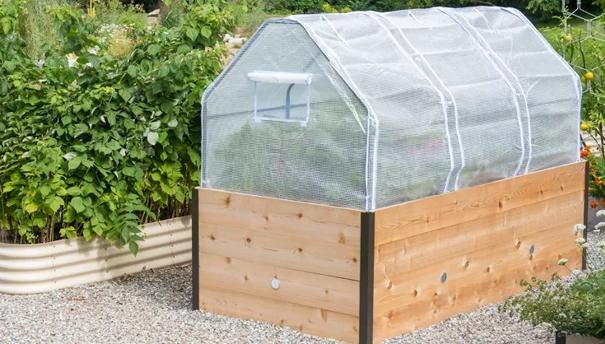We LOVE our perennial plants — year after year, they burst forth from previously frozen ground to grace us with gorgeous blooms. However, prime bloom time in most North American perennial borders runs from May through early July—a glorious but short 5 or 6 weeks. By late July, most perennial gardens are past their prime and look pretty dull for the rest of the season. There are some perennials that pop up briefly in late summer: think coneflower, asters, Helenium, cimicifuga, sedum, rudbeckia, and phlox.
Enter annuals. These plants are short-lived (living their entire life cycle within one growing season) but turn out beautiful blooms and leaves the entire time. And with a little planning, you can create annual-perennial combinations that will keep your flower gardens looking terrific for a full 5 or 6 months.
Reasons To Add Annuals to Your Garden
 Heliotrope thrives in the cooler temperatures of late-summer and early fall.
Heliotrope thrives in the cooler temperatures of late-summer and early fall.- Unlike many perennials, most annuals thrive in summer's heat and once they get started, will keep blooming right into early fall.
- Annuals are easy to grow from seed, and they offer brightly colored flowers for instant impact
- They are versatile and can be grown in raised beds, hanging baskets, or containers.
- You can find annuals for every situation: full shade, climbing vines, spillers, foliage plants, etc.
3 Tips for Success with Annuals in Late Summer
1. Choose heat-tolerant annuals.
Select hardy, warm-weather plants that won't mind the late summer heat: think ageratum, cleome, morning glory, browallia, nicotiana, salvia, verbena and zinnia.
 Coleus
Coleus2. Don't forget foliage!
Plant breeders have created a multitude of annuals boasting colorful foliage that stays vibrant until fall frosts: Coleus, Sweet potato vine, and Artemesia are favorites.
3. Add some tropicals.
There are many fabulous heat-loving plants from zones 8 and 9 that can be used as annuals in northern growing zones. Though many of these are quite large, they are worth wrestling in to the perennial garden! Good candidates include canna, elephant ear, ginger lily, Mexican sage, and the many varieties of plectranthus.
Best Annuals for Continous Color All Season
| Plant | Sun or Shade |
|---|---|
| Ageratum | Sun |
| Begonia | Shade |
| Coleus | Part Shade/Part Sun |
| Geranium | Sun |
| Impatiens | Shade |
| Morning Glory | Sun |
| Nasurtium | Part Shade/Part Sun |
| Salvia | Sun |
| Snapdragon | Sun |
| Zinnia | Sun |




